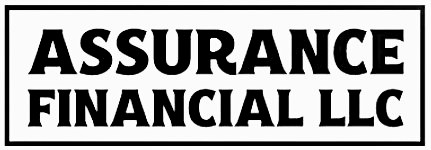Many businesses engaged in innovation seek to recoup their research and development costs through the research tax credit. This tax benefit can significantly reduce a business’s tax liability.
The calculation for the credit is complex. As a general rule of thumb, the amount of the credit usually ends up being about eight percent of the qualified expenses that are used to compete the credit. So a business that spends $100,000 a year in qualified expenses, may end up with a 8,000 tax credit.
There are a number of hurdles to get this tax benefit. The recent Little Sandy Coal Company, Inc. v. Commissioner, T.C. Memo. 2021-15, case highlights an often overlooked requirement. This is the “substantially all” test and it can be a tax credit killer.
Facts & Procedural History
The business in this case owned a shipbuilding subsidiary. The company claimed research tax credits for expenses its subsidiary incurred while developing several vessels. This included an 87,000-barrel tanker barge for Apex Oil (the “Apex tanker”) and a dry dock for a shipyard.
The IRS disallowed the claimed credit of $1,141,713, resulting in a tax deficiency of $324,529. The business petitioned the U.S. Tax Court for relief, arguing that both vessels involved significant research activities that qualified for the credit.
The Apex tanker was based on a previously built vessel (Penn 80) but contained numerous redesigned elements. The dry dock represented an entirely new design that the subsidiary had never built before. The business maintained that the expenses associated with these innovative projects qualified for the research tax credit.
The IRS and business agreed to focus on these two representative vessels to resolve issues common to all projects for which the business claimed the credit.
The Research Tax Credit Framework
To understand why the research tax credits were not allowed in this case, one has to first understand the statutory requirements for the research tax credit under Section 41.
For research expenses to qualify for the credit, they must satisfy four tests:
- The expenses must be eligible for treatment as expenses under Section 174
- The research must be undertaken to discover technological information
- The information must be intended for developing a new or improved business component
- Substantially all research activities must constitute elements of a process of experimentation
There are numerous court cases and regulations that help clarify each of these rules.
The tax court’s decision in this case focused primarily on the fourth requirement—the process of experimentation test.
A process of experimentation is a process designed to evaluate alternatives where uncertainty exists about the capability or method of achieving a result. The process must fundamentally rely on principles of the physical or biological sciences, engineering, or computer science.
The “Substantially All” Test
In the prior court cases and guidance, the focus of this test was on whether there was a process of experimentation. The forcus was not on whether the process satsified the “subsntially all” language. That is where this case fits into the statutory scheme.
The regulations do have rules that explain what “substantially all” means. It does not mean 50% or more which is what the common understanding of the term might be.
Treasury Regulation § 1.41-4(a)(6) specifies that the “substantially all” requirement is satisfied only if 80% or more of a taxpayer’s research activities, measured on a cost or other consistently applied reasonable basis, constitute elements of a process of experimentation for a qualifying purpose.
The POE 80% Looks to Activities, Not the Business Component
Naturally, the business argued that “substantially all” of its research activities constituted a process of experimentation. It noted that more than 80% of each vessel’s physical elements were new or redesigned compared to previous vessels. This makes sense as the tests for qualified research activities are generally applied to the business component–i.e., the “thing” if you will, that is being designed.
The tax court rejected this approach. It explained that: “We cannot accept—indeed, petitioner does not even argue—that a business component’s proportion of novel elements is a ‘reasonable basis’ for measuring the proportion of research activities undertaken in the product’s development that constitute elements of a process of experimentation.”
The court emphasized that novelty alone doesn’t establish the need for experimentation. As the court stated, “novelty may create uncertainty, but resolution of that uncertainty need not require experimentation.”
The court in this case emphasized that this test applies to activities—not to physical components of the product being developed or improved. This distinction proved fatal to the business’s claim in this case.
Production Workers vs. Experimentation
So if the activities are the issue, that begs the question as to whose activities are included? There isn’t a clear answer on this issue.
As noted by the court, there is a numerator and denominator that is used to apply the 80% rule. What goes into the numerator is the specific issue in this case.
The business argued that its production employees’ work on novel elements of the vessels should count in the numerator of this fraction. The company presented evidence showing that 87% of production employee time was spent constructing novel components of the Apex tanker, claiming this satisfied the 80% threshold.
The tax court rejected this reasoning based on a careful reading of Section 41(b)(2)(B), which distinguishes between “engaging in qualified research” and “engaging in the direct supervision or direct support of research activities.” The court determined that production workers who build components may provide direct support for research, but their activities aren’t part of the experimentation process itself.
As the court explained, “those who directly support research are, by definition, not engaged in research.” While production workers’ wages might be included in the denominator as Section 174 expenses, their activities cannot be included in the numerator as elements of a process of experimentation. This distinction made it mathematically impossible for the taxpayer to meet the 80% threshold.
This is one interpretation of the rules, but is not actually set out in the regulations or prior guidance. There are a number of other plausible ways these rules could be applied. Given the novelty of this issue and the ambiguity in the rules that are being applied, it is expected that the taxpayer will appeal this decision.
The Takeaway
This case highlights how difficult it is to prove up a research tax credit. This requires more than showing a product contains new or improved features. Taxpayers must establish that substantially all research activities constitute elements of a process of experimentation and maintain detailed records to substantiate their claims. Without proper documentation and a clear understanding of what activities qualify as experimentation, even genuinely innovative work may fail to qualify for this valuable tax benefit if audited by the IRS.


